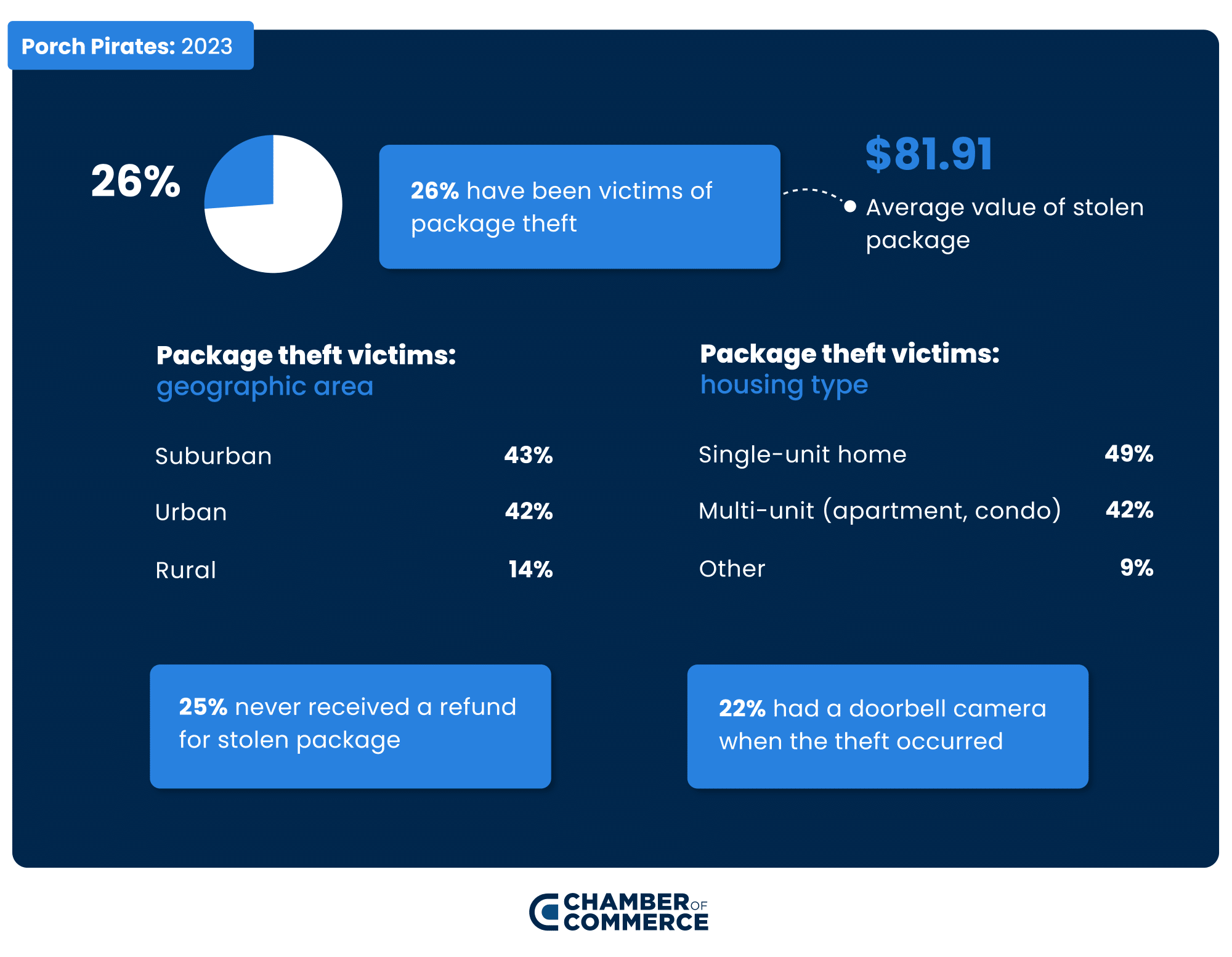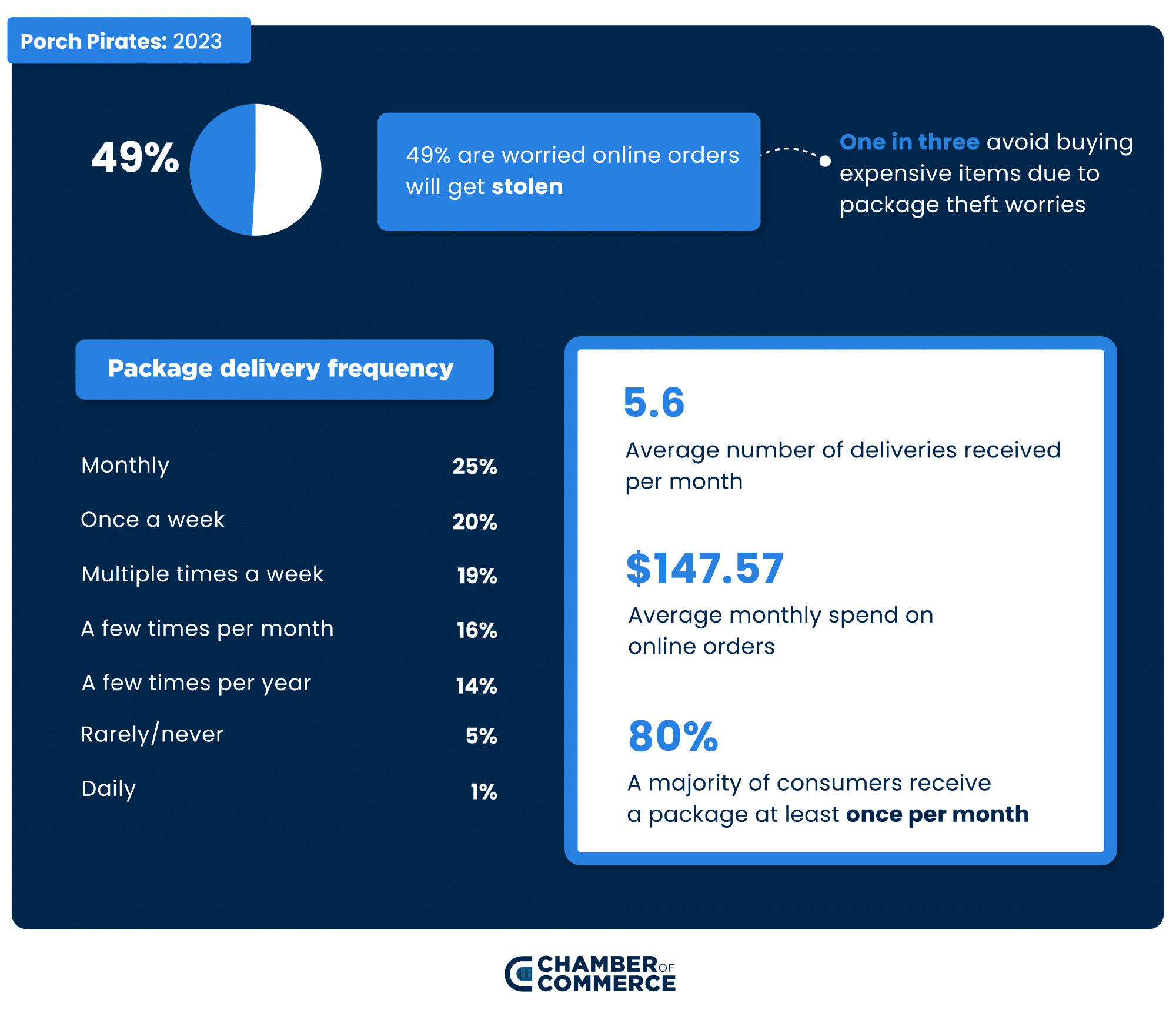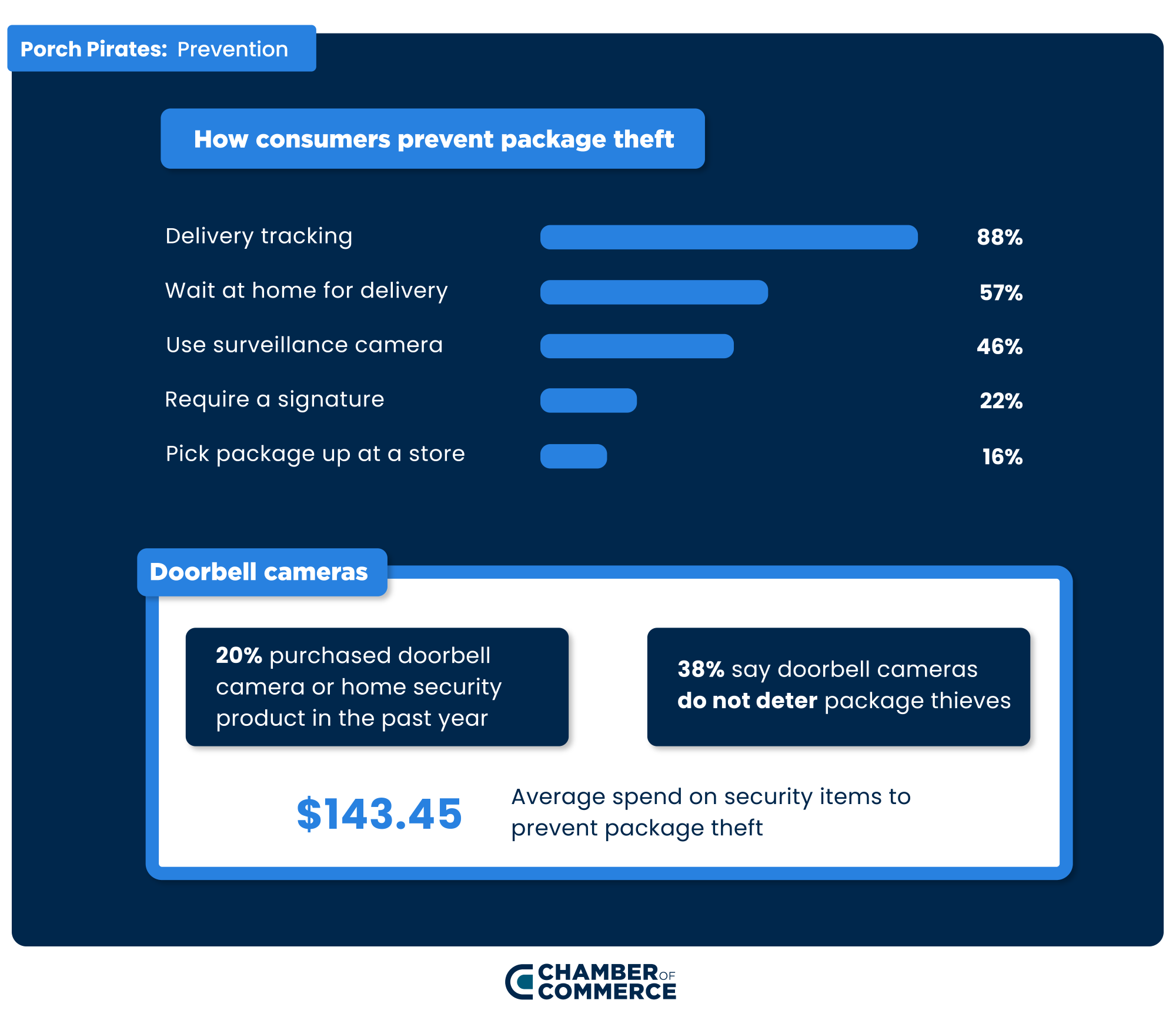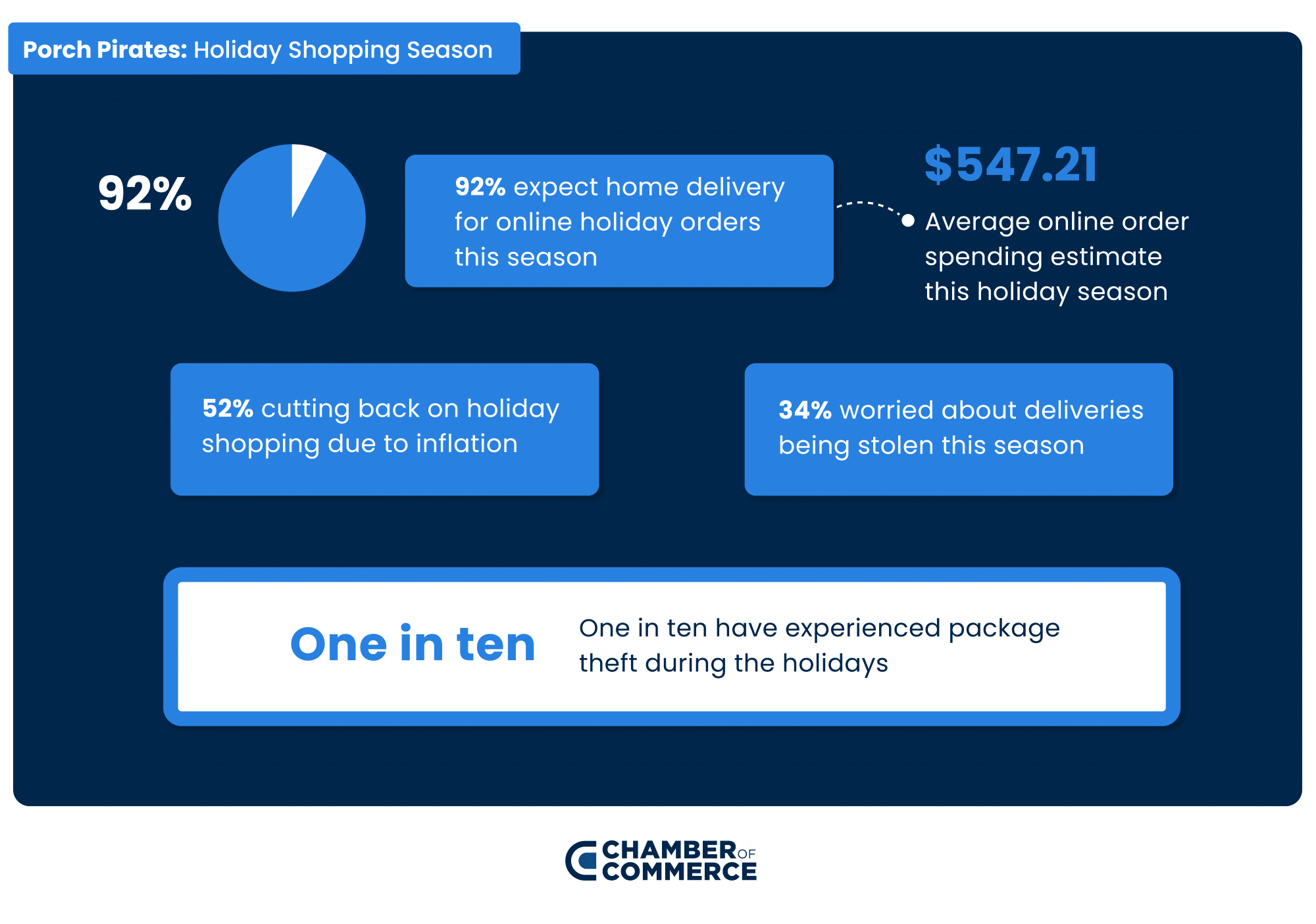In the age of e-commerce, consumers have grown accustomed to the convenience of getting an online order shipped right to their doorstep.
But with delivery convenience comes concern for delivery theft.
Package theft or “porch pirates” continue to be a problem for online consumers across the country.
Whether you’re a consumer or an e-commerce business owner, protecting your online orders and shipments is a top priority.
From Amazon lockers and doorbell cameras to requiring a signature and staying at home for deliveries, consumers have tried numerous methods to thwart thieves. Even AI technology has recently been introduced by UPS to prevent package theft.
But how widespread of an issue is porch piracy for consumers?
In order to find out, we conducted a nationwide survey of online consumers to ask them about their experiences with package theft and as well as measures they take to prevent theft.
Key findings
- More than one-quarter of consumers (26%) have had a package stolen, and most porch pirate incidents occurred at single-unit residential homes (49%) rather than an apartment or condominium (42%).
- The average value of a stolen package was $81.91, according to respondents.
- Among package theft victims, 22% had a doorbell camera when the theft occurred and 25% never received a refund for the stolen item(s).
- 38% believe that doorbell cameras do not deter package thieves.
- More than one-third (36%) of respondents say advancements in AI technology will help prevent future package theft.
How common is package theft?
According to respondents, more than one-quarter (26%) have been victims of package theft. Among those who have a package stolen, 34% say they have been victims of package theft within the last 12 months.
According to package theft victims, 43% live in suburban areas while 42% live in urban areas, indicating that package theft is widespread, regardless of geography. Most thefts occurred in single-unit homes (49%), while 42% of package theft victims said they live in a multi-unit residential building such as an apartment complex or a condominium.
In terms of the value of stolen items, package theft victims say the average loss was about $81.91. Interestingly, only 18% of package theft victims say they filed a report with the police after the theft occurred and even fewer (6%) say the thief or thieves were caught.
As porch pirates become more brazen, consumers are questioning the effectiveness of preventative security measures such as doorbell cameras. Among package theft victims, 22% say they had a doorbell camera when the theft occurred.
Overall, more than one-third (38%) of respondents believe that doorbell cameras are no longer an effective deterrent.
How common are package deliveries?
Along with asking consumers about their experiences with package theft, we also asked respondents about their overall online shopping habits.
An overwhelming majority (80%), say they receive a package delivery at least once a month, if not more. Nearly two in ten (19%) receive package delivery multiple times a week.
Regardless of how often consumers receive a package, porch pirates are on their mind. According to respondents, 49% are concerned that their online orders will get stolen. Overall, about one in three (31%) avoid buying expensive items online due to concerns about package theft.
How to prevent package theft
Most consumers say they track their online orders after purchase (88%), while more than half (57%) stay at home when they’re expecting a delivery as a means of package theft prevention. Elsewhere, 46% use surveillance doorbell cameras such as a Nest or Ring.
Despite 38% of respondents believing that doorbell cameras are ineffective, 20% of respondents purchased a doorbell camera or a home security product within the past year to help prevent package theft. On average, respondents say they spent about $143.45 on home security items to prevent their packages from being stolen.
More than one-third (36%) of respondents say advancements in AI technology will help prevent future package theft. Delivery companies are already implementing AI to monitor and prevent package theft. In June, UPS introduced DeliveryDefense, which uses AI to reduce the risk of delivery theft.
How consumers plan to shop during the holidays
The holidays are the busiest time of year for both e-commerce brands and online consumers, so it’s not surprising that 92% of consumers expect to receive a package delivery during the holiday shopping season.
On average, consumers plan to spend $547.21 on online orders this holiday season. However, slightly more than one-third are worried about their deliveries being stolen and one in ten consumers said they have had a package stolen during the holiday season.
It’s too early to tell if changes in spending habits will lead to a decrease in package theft this holiday season, but this season could see fewer packages being delivered. Overall, more than half (52%) plan to cut back on holiday shopping due to inflation.
Porch piracy can happen anytime of the year, so it’s always a good idea to be prepared and put preventative measures in place to keep your orders safe. Whether it’s shipping your order to a secure location or giving your customers the option to track their packages, there are several ways to make sure online orders get into the right hands safely and securely.
Methodology
In October 2023, we surveyed 1,250 U.S. consumers across the country to ask them about their experience with package delivery, package theft, and porch pirate prevention. Among respondents, 50% were female, 47% were male, and 3% were non-binary/non-conforming. The average age of respondents was 41.
Income: Under $20,000 (15%); $20,000-$34,999 (14%); $35,000-$49,999 (14%); $50,000-$74,999 (23%); $75,000-$99,999 (15%); $100,000 or over (19%).
Fair Use: Feel free to use this data and research with proper attribution linking to this study.
Media Inquiries: For media inquiries, contact [email protected]





